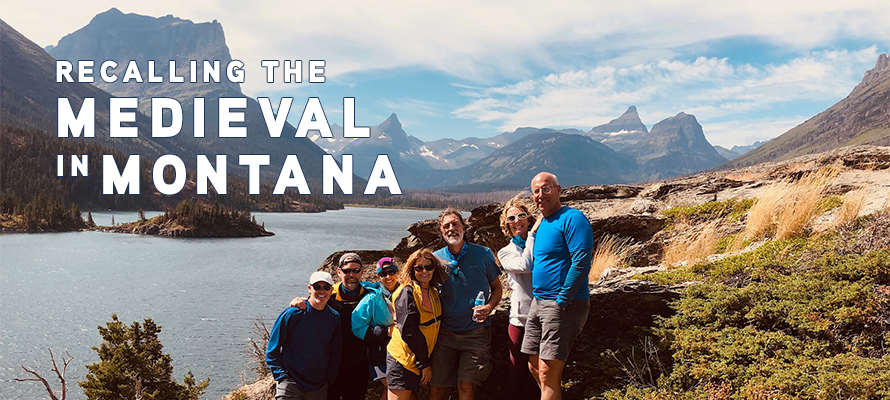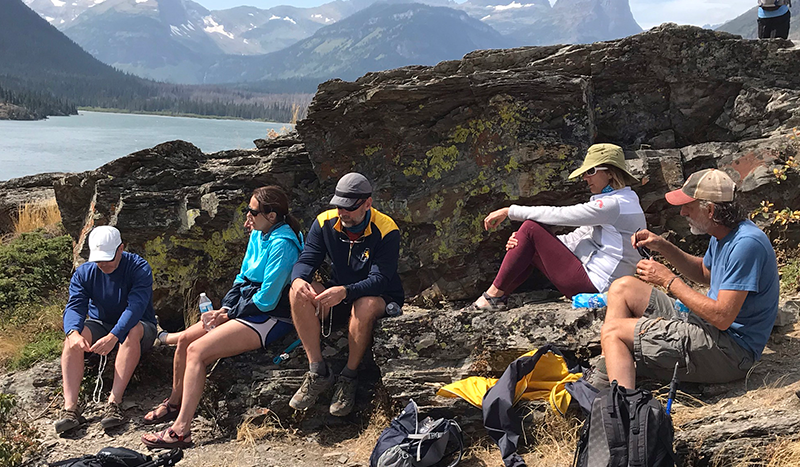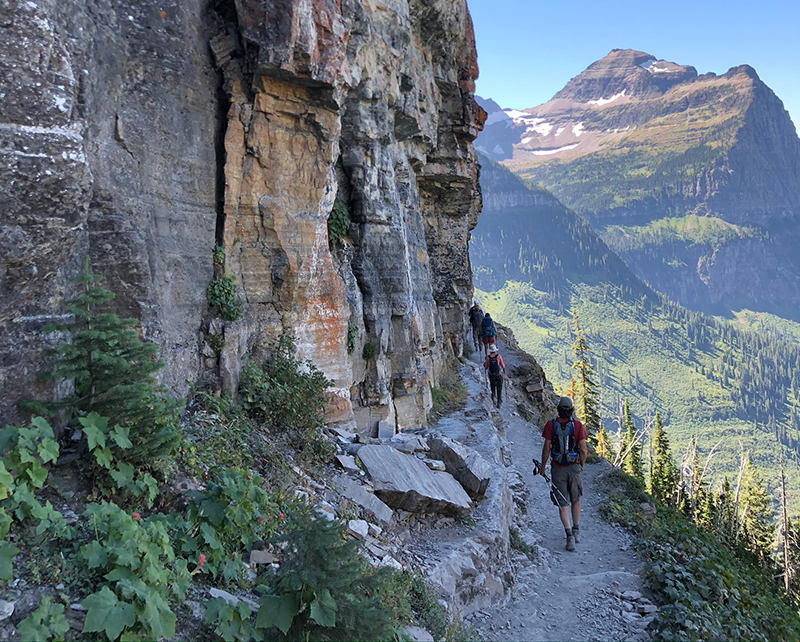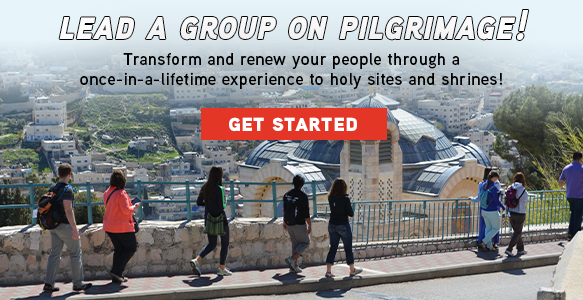
Along with many others in the world today, my travel plans this summer were affected by disappointing cancellations, postponements, forbidden border crossings, and destination changes. My husband and I were initially looking forward to accompanying his parents to the Holy Land this June, a first-time pilgrimage for all of us. We were counting our daily steps and mentally packing our bags while imagining walking in the footsteps of our Lord, Our Lady and His disciples. As departure drew nearer, fear and all of the uncertainties surrounding travel and life in general had gripped the globe. International pilgrimages were no longer an option; even Domestic trips posed elements of danger and raised anxieties.
With the end of summer and approaching start of an entirely different type of school year looming, we decided to join 5 friends on a hiking adventure to Glacier National Park in Montana. We were very excited to be sharing this vacation with a Catholic priest, a Deacon and his wife, hoping our days would be filled with spiritual significance, as well as one could find on a pilgrimage.
We celebrated daily Mass before each adventure and had countless opportunities to pray the rosary, discuss our faith, and “offer up” our sufferings while ascending the rugged mountain paths. The mountains, lakes, streams, and scenery were magnificent while we hiked far and wide into God’s amazing creation. As you can imagine, the car conversations after a day’s hike on our way back to the cabin were filled with exuberance and great accomplishment, always ending in praise and thanksgiving to our Lord for new experiences and safety (no bear encounters). It was during one of our car rides back to the cabin that I heard the fascinating story of how the body of St. Anne (Our Lady’s mother) ended up in Gaul, then a province of the Roman empire and is now part of France and northern Italy.

According to one ancient tradition, during the first century of the Christian era, Jews hostile to Christianity banished Lazarus, his sister Martha, and Mary Magdalene, along with the body of St. Anne from Palestine. They were cast out to sea on a vessel with no sails, oars, or food and miraculously landed in Provence. Once on shore, they took St. Anne’s holy remains to the city of Apta Julia, now Apt, France for safe keeping. The preservation and protection of relics was a difficult and risky endeavor due to healings and miracles attributed to holy remains. It was around the year 118, when warning came of barbarian invasions along with an increase in Christian persecution, that St. Auspicius decided to bury St. Anne even deeper under his church in order to protect his sacred treasure from discovery or desecration. This was recorded as fact in the Martyrology of Apt, one of the most ancient in existence. St. Anne remained safe in her subterranean sanctuary for many centuries, hidden not forgotten.
By the end of the 8th century, peace had been restored after Charlemagne’s victory over the Saracens, so the people began rebuilding their churches and holy places. Priests, bishops and even the Emperor himself began searching for St. Anne’s crypt across the countryside, but sadly numerous excavations were unsuccessful. Weary in sight and mind, Emperor Charlemagne had traveled to Apta Julia to have the cathedral reconsecrated during the end of the Easter Season in 792, and it is here where the miracle took place.
Among the people who attended the services was a 14-year-old boy named John who was born deaf, mute and blind. It is recorded in Charlemagne’s letter to Pope Adrian I, that during a solemn part of the Mass, John gazed up into the heavens as if he was hearing voices and moved awkwardly towards the altar inside of the cathedral. Once at the stairs leading up to the altar, John began striking the stair steps with his staff, making noises and digging motions. This continued several times throughout the Mass, as clergy and the royal guards could not restrain young John’s antics at the altar.
The persistent young man fascinated Charlemagne, who ordered the unearthing of the stairs immediately after Mass, with John leading the charge. After the removal of the stairs, a door was revealed under large stones. The opening of the door exposed a staircase leading to a crypt that looked like a Roman catacomb, where centuries before in this very place, St. Auspicius had held holy Mass. John rushed down the steps as though he could see, insisting that they continue digging into the wall. Once the wall came down, a lower crypt came into view at the end of a dark, narrow passageway. As the group drew nearer, they could see altar candles that had remained burning, illuminating the dark chamber with extraordinary light. At that moment the candles extinguished, and John could see, hear, and speak proclaiming, “The body of Saint Anne, mother of the Virgin Mary, Mother of God, is in yonder recess!”
Amazed and awe-struck, the Emperor and his followers were joyfully overtaken by a sweet fragrance while viewing a casket of cypress wood laid before them. The inscription on the casket read “Here lies the body of Blessed Anne, Mother of the Virgin Mary.” This extraordinary and miraculous find immediately made the Cathedral an important pilgrimage destination from every part of that world. Throughout the centuries, fragments from this saintly Grandmother have made their way to other various holy places, but the main portion of St. Anne’s sacred remains rest peacefully today in Apt, France.





